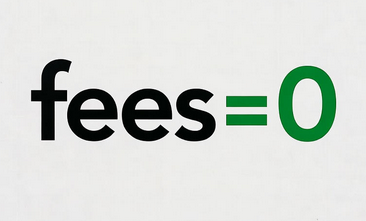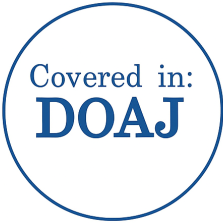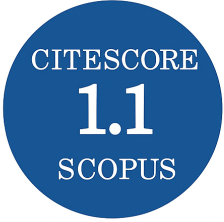Composite Index for 2SFCA Based Accessibility Comparison and Field Hospitals Distribution Analysis along the Frontline
DOI:
https://doi.org/10.3849/aimt.01910Keywords:
2SFCA, composite index, field hospitals, frontline, spatial accessibilityAbstract
Two-step floating catchment area (2SFCA) indices serve to measure accessibility in a geographical area. They were developed mainly to investigate the distribution of medical resources to civilians. Recently, the 2SFCA methodology was introduced to a military
background where accessibility of field hospitals along a frontline is considered. This article aims to develop a new composite index with a clear interpretation that allows accessibility to be compared for two distinct situations in the following setting. In the
first situation, accessibility is calculated and then the situation changes which impacts accessibility as well. The composite index that is developed in this article then interprets the change and assigns to it an interpretable numerical value. The final composite index is
a weighted mean of eleven properties of accessibility indices. Furthermore, the developed index is appropriated for the use in military environment to investigate the distribution of field hospitals along a frontline.
References
STACHERL, B. and O. SAUZET. Gravity Models for Potential Spatial Healthcare Access Measurement: a Systematic Methodological Review. International Journal of Health Geographics, 2023, 22(34). DOI 10.1186/s12942-023-00358-z.
PENG, Z. The Jobs-Housing Balance and Urban Commuting. Urban Studies, 1997, 34(8), pp. 1215-1235. DOI 10.1080/0042098975600.
RADKE, J. and L. MU. Spatial Decompositions, Modeling and Mapping Service Regions to Predict Access to Social Programs. Geographic Information Sciences, 2000, 6(2), pp. 105-112. DOI 10.1080/10824000009480538.
GUAGLIARDO, M. Spatial Accessibility of Primary Care: Concepts, Methods and Challenges. International Journal of Health Geographics, 2004, 3(3). DOI 10.1186/1476-072X-3-3.
LUO, W. and F. WANG. Measures of Spatial Accessibility to Healthcare in a GIS Environment: Synthesis and a Case Study in Chicago Region. Environment and Planning B: Urban Analytics and City Science, 2003, 30(6), pp. 865-884. DOI 10.1068/b29120.[6] LUO, W. and Y. QI. An Enhanced Two-Step Floating Catchment Area (E2SFCA)
Method for Measuring Spatial Accessibility to Primary Care Physicians. Health and Place, 2009, 15(4), pp. 1100-1107. DOI 10.1016/j.healthplace.2009.06.002.
MCGRAIL, M. and J. HUMPHREYS. Measuring Spatial Accessibility to Primary Care in Rural Areas: Improving the Effectiveness of the Two-Step Floating Catchment Area Method. Applied Geography, 2009, 29, pp. 533-541. DOI 10.1016/j.apgeog.2008.12.003.
DAI, D. Black Residential Segregation, Disparities in Spatial Access to Health Care Facilities, and Late-Stage Breast Cancer Diagnosis in Metropolitan Detroit. Health and Place, 2010, 16(5), pp. 1038-1052. DOI 10.1016/j.healthplace.2010.06.012.
DAI, D. and F. WANG. Geographic Disparities in Accessibility to Food Stores in Southwest Mississippi. Environment and Planning B: Planning and Design, 2011, 38(4), pp. 659-677. DOI 10.1068/b36149.
LUO, W. and T. WHIPPO. Variable Catchment Sizes for the Two-Step Floating Catchment Area (2SFCA) Method. Health and Place, 2012, 18(4), pp. 789-795. DOI 10.1016/j.healthplace.2012.04.002.
LANGFORD, M., G. HIGGS and R. FRY. Multi-modal Two-Step Floating Catchment Area Analysis of Primary Health Care Accessibility. Health and Place, 2016, 38, pp. 70-81. DOI 10.1016/j.healthplace.2015.11.007.
WAN, N., B. ZOU and T. STERNBERG. A 3-step Floating Catchment Area Method for Analyzing Spatial Access to Health Services. International Journal of Geographical Information Science, 2012, 26(6), pp. 1073-1089. DOI 10.1080/13658816.2011.624987.
WIDENER, M. and J. SHANNON. When are Food Deserts? Integrating Time into Research on Food Accessibility. Health and Place, 2014, 30, pp. 1-3. DOI 10.1016/j.healthplace.2014.07.011.
WIDENER, M., S. FARBER, T. NEUTENS and M. HORNER. Spatiotemporal Accessibility to Supermarkets Using Public Transit: An Interaction Potential Approach in Cincinnati, Ohio. Journal of Transport Geography, 2015, 42, pp. 72-83. DOI 10.1016/j.jtrangeo.2014.11.004.
BAUER, J. and D. GRONEBERG. Measuring Spatial Accessibility of Health Care Providers-Introduction of a Variable Distance Decay Function Within the Floating Catchment Area (FCA) Method. PLOS ONE, 2016, 11(7). DOI 10.1371/journal.pone.0159148.
KC, K., J. CORCORAN and P. CHHETRI. Measuring the Spatial Accessibility to Fire Stations Using Enhanced Floating Catchment Method. Socio-Economic Planning Sciences, 2020, 69. DOI 10.1016/j.seps.2018.11.010.
LIU, W., H. XU, J. WU, W. LI and H. HU. Measuring Spatial Accessibility to Refuge Green Space after Earthquakes: A Case Study of Nanjing, China. PLOS ONE, 2022, 17(6). DOI 10.1371/journal.pone.0270035.
SU, H., W. CHEN and M. CHENG. Using the Variable Two-Step Floating Catchment Area Method to Measure the Potential Spatial Accessibility of Urban Emergency Shelters. GeoJournal, 2022, 87(4), pp. 2625-2639. DOI 10.1007/s10708-021-10389-3.
SU, H., W. CHEN and C. ZHANG. Evaluating the Effectiveness of Emergency Shelters by Applying an Age-Integrated Method. GeoJournal, 2023, 88(4), pp. 951-969. DOI 10.1007/s10708-022-10669-6.
AYDIN, N. A Stochastic Mathematical Model to Locate Field Hospitals under Disruption Uncertainty for Large-Scale Disaster Preparedness. An International Journal of Optimization and Control: Theories and Applications, 2016, 6(2), pp. 85-102. DOI 10.11121/ijocta.01.2016.00296.
SALMAN, F. and S. GUL. Deployment of Field Hospitals in Mass Casualty Incidents. Computers and Industrial Engineering, 2014, 74, pp. 37-51. DOI 10.1016/j.cie.2014.04.020.
HASSAN, S., K. ALNOWIBET, P. AGRAWAL and A. MOHAMED. Optimum Location of Field Hospitals for COVID-19: A Nonlinear Binary Metaheuristic Algorithm. Computers, Materials and Continua, 2021, 68(1), pp. 1183-1202. DOI 10.32604/cmc.2021.015514.
ALISAN, O., M. ULAK, E. OZGUVEN and M. HORNER. Location Selection of Field Hospitals Amid COVID-19 Considering Effectiveness and Fairness: A Case Study of Florida. International Journal of Disaster Risk Reduction, 2023, 93. DOI 10.1016/j.ijdrr.2023.103794.
JEKL, J. and J. JANSK ´ Y. Geographical Distribution Analysis of Field Hospitals Along the Frontline: 2SFCA Method-based Approach. In: Proceedings of the Challenges to National Defence in Contemporary Geopolitical Situation. Brno, Czech Republic, 2024, pp. 403-410. DOI 10.3849/cndcgs.2024.403.
Human Development Index [online]. [Viewed 2024-07-02]. Available from: https://hdr.undp.org/data-center/human-development-index#/indicies/HDI
Gender Inequality Index [online]. [Viewed 2024-07-02]. Available from: https://hdr.undp.org/data- center/thematic- composite- indices/gender- inequality- index#/indicies/GII
JORG, R. and L. HALDIMANN. MHV3SFCA: A New Measure to Capture the Spatial Accessibility of Health Care Systems. Health and Place, 2023, 79. DOI 10.1016/j.healthplace.2023.102974.
ZHOU, Z., X. ZHANG, M. LI and X. WANG. An SCM-G2SFCA Model for Studying Spatial Accessibility of Urban Parks. International Journal of Environmental Research and Public Health, 2023, 20(1). DOI 10.3390/ijerph20010714.
YANG, J., O. ALISAN, M. MA, E.E. OZGUVEN, W. HUANG and L. VIJAYAN. Spatial Accessibility Analysis of Emergency Shelters with a Consideration of Sea Level Rise in Northwest Florida. Sustainability, 2023, 15(13). DOI 10.3390/su151310263.
KAKWANI, N. Income Inequality and Poverty Methods of Estimation and Policy Applications. New York, USA: Oxford University Press, 1980. ISBN 0-19-520227-9.
CERIANI, L. and P. VERME. The Origins of the Gini Index: Extracts from Variabilita e Mutabilit ` a (1912) by Corrado Gini. ` Journal of Economic Inequality, 2012, 10, pp. 421-443. DOI 10.1007/s10888-011-9188-x.
JEKL, J. and J. JANSK ´ Y. Security Challenges and Economic-Geographical Metrics for Analyzing Safety to Achieve Sustainable Protection. Sustainability, 2022, 14(22). DOI 10.3390/su142215161.
DRUCKMAN, A. and T. JACKSON. Measuring Resource Inequalities: The Concepts and Methodology for an Area-based Gini Coefficient. Ecological Economics, 2008, 65(2), pp. 242-252. DOI 10.1016/j.ecolecon.2007.12.013.
Heaviside Step Function [online]. [Viewed 2024-07-25]. Available from: https://mathworld.wolfram.com/HeavisideStepFunction.html
Latest news on Live Maps [online]. [Viewed 2024-01-31]. Available from: https://liveuamap.com
SUCHANEK, Z. and A. OULEHLOVA. Field Hospital Logistics Support System Risk Assessment. In: TUSER, I. and S. HOSKOVA-MAYEROVA, eds. Trends and Future Directions in Security and Emergency Management. Springer, 2022, pp. 241-252. ISBN 978-3-030-88907-4. DOI 10.1007/978-3-030-88907-4 13.
KOCATEPE, A., E. OZGUVEN, M. HORNER and H. OZEL. Pet- and Special Needs-Friendly Shelter Planning in South Florida: A Spatial Capacitated P-median-Based Approach. International Journal of Disaster Risk Reduction, 2018, 31, pp. 1207-1222. DOI 10.1016/j.ijdrr.2017.12.006.
WHITEHEAD, J., A. PEARSON, R. LAWRENSON and P. ATATOA-CARR. Defining General Practitioner and Population Catchments for Spatial Equity Studies Using Patient Enrolment Data in Waikato. Applied Geography, 2020, 115. DOI 10.1016/j.apgeog.2019.102137.
WHITEHEAD, J., K. BLATTNER, R. MILLER, S. CRENGLE, S. RAM, X. WALKER et al. Defining Catchment Boundaries and Their Populations for Aotearoa New Zealand’s Rural Hospitals. Journal of Primary Health Care, 2023, 15(1), pp. 14-23. DOI 10.1071/HC22133.
OHASHI, K., K. FUJIWARA, T. OSANAI, T. TANIKAWA, K. BANDO, S. YAMASAKI et al. Potential Crowdedness of Mechanical Thrombectomy and Cerebral Infarction Mortality in Japan: Application of Inverted Two-Step Floating Catchment Area Method. Journal of Stroke and Cerebrovascular Diseases, 2022, 31(9). DOI 10.1016/j.jstrokecerebrovasdis.2022.106625.
LEE, W., J. JURKOWSKI and N. GENTILE. Food Pantries and Food Deserts: Health Implications of Access to Emergency Food in Low-Income Neighborhoods. Urban Social Work, 2023, 7(1), pp. 29-42. DOI 10.1891/USW-2022-0008.
SUBAL, J., P. PAAL and J. KRISP. Quantifying Spatial Accessibility of General Practitioners by Applying a Modified Huff Three-Step Floating Catchment Area (MH3SFCA) Method. International Journal of Health Geographics, 2021, 20(1). DOI 10.1186/s12942-021-00263-3.
JAVANMARD, R., J. LEE, K. KIM, J. PARK and E. DIAB. Evaluating the Impacts of Supply-demand Dynamics and Distance Decay Effects on Public Transit Project Assessment: A Study of Healthcare Accessibility and Inequalities. Journal of Transport Geography, 2024, 116. DOI 10.1016/j.jtrangeo.2024.103833.
Downloads
Published
Issue
Section
Categories
License
Copyright (c) 2024 Advances in Military Technology

This work is licensed under a Creative Commons Attribution-NonCommercial 4.0 International License.
Authors who publish with this journal agree to the following terms:
1. Authors retain copyright and grant the journal right of first publication with the work simultaneously licensed under a Creative Commons Attribution License that allows others to share the work with an acknowledgement of the work's authorship and initial publication in this journal.
2. Authors are able to enter into separate, additional contractual arrangements for the non-exclusive distribution of the journal's published version of the work (e.g., post it to an institutional repository or publish it in a book), with an acknowledgement of its initial publication in this journal.
3. Authors are permitted and encouraged to post their work online (e.g., in institutional repositories or on their website) prior to and during the submission process, as it can lead to productive exchanges, as well as earlier and greater citation of published work.
Users can use, reuse and build upon the material published in the journal for any purpose, even commercially.






